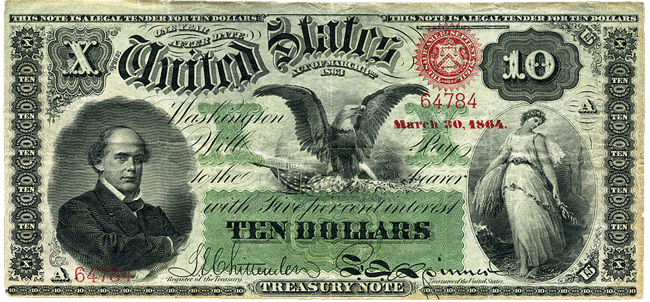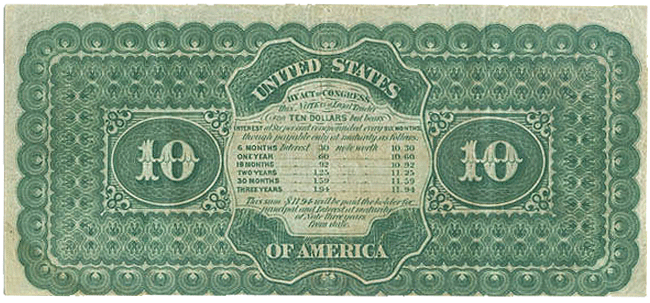ECONOMIC ROLE
Compound Interest Treasury Note
Move your cursor over the bill or tap it on your screen to see the reverse side.


- Congress authorized these notes in March 1863, and the Treasury Department put them into general circulation in 1863 and 1864. Their issuance helped finance the Union effort during the Civil War.
- The notes were considered legal tender at face value. They paid compound interest of 6 percent per year payable at the end of three years from the date of issuance.
- The front, or obverse, features an off-center portrait of Salmon P. Chase, President Lincoln's Secretary of the Treasury; a center portrait of a bald eagle in front of the U.S. Capitol; and, to the right of center, Peace.
- The back, or reverse, of the note includes a table listing the value of the notes at six-month intervals until the end of its three-year maturity.



